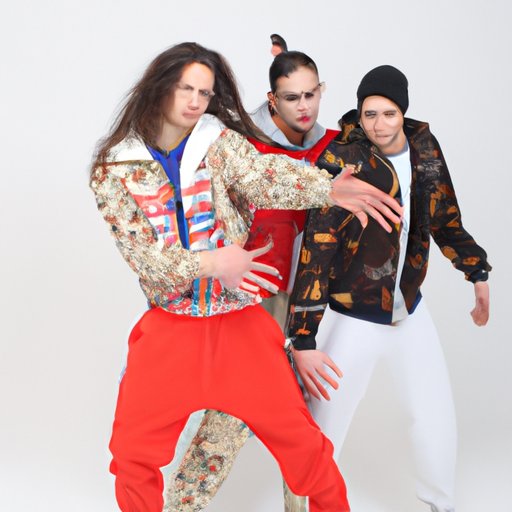Exploring the World of Popping: From Basics to Benefits
When you hear the word “popping,” you may think of the sound of a balloon or the action of cracking your knuckles. However, popping also refers to a distinct dance style that has become an integral part of hip hop culture. With its mesmerizing isolations and electrifying rhythms, popping has captivated dancers and audiences alike.
In this article, we’ll dive into the mechanics of popping, its evolution over time, the cultural significance it holds within hip hop, and tips for mastering the art of popping. Plus, we’ll explore the benefits of popping beyond just the dance floor. So, put on your dancing shoes and get ready to explore the world of popping!
Exploring the Mechanics of Popping: A Basic Overview
What exactly is popping? Popping is a street dance style that involves contracting and relaxing the muscles to create a quick, jerky movement, or pop. These pops are often done in rhythm with the music and are accompanied by isolations, or the ability to move one part of the body independently from the others.
Popping originated in the late 1960s and early 1970s in Fresno, California, where a group of dancers known as the Electric Boogaloo Crew began performing their unique style of dance. The style quickly spread through California and eventually became a mainstay of hip hop culture.
The basic movements involved in popping are the hit, wave, glide, twist-o-flex, and boogaloo. Each of these movements involves a combination of quick muscle contractions and isolations. When done correctly, popping creates a visually stunning effect that appears almost robotic in nature.
The Evolution of Popping as a Dance Style
As with any dance style, popping has evolved over time. In the early days, popping was primarily done to funk and soul music. However, as hip hop culture grew in popularity, popping began to be incorporated into other styles of music, such as rap and electronic dance music (EDM).
In addition to the influence of other music styles, popping has also been influenced by other dance styles, such as isolation, tutting, and waving. These styles have contributed to the evolution of popping and have led to the creation of new styles, such as finger-tutting and animation.
Popping has also gained popularity in mainstream media. Movies such as “Breakin'” and “Electric Boogaloo” showcased popping and other street dance styles, bringing them to a wider audience. Pop culture icons such as Michael Jackson and Madonna have also incorporated popping into their performances, further cementing its place in popular culture.

5 Popping Moves Every Beginner Should Master
If you’re just starting out in popping, there are a few foundational moves that you should focus on mastering. These moves will serve as a basis for more complex movements and will help you develop your muscle control and isolations. Here are five essential popping moves:
1. The Hit
The hit involves a sudden contraction of the muscles, usually in the arms or legs. The hit can be done in a variety of directions and is often used as a punctuation mark in a dance routine.
2. The Wave
The wave involves creating a flowing movement through the body. This movement can be done in various directions and can be combined with other moves to create intricate sequences.
3. The Glide
The glide involves a smooth, sliding movement that appears almost weightless. This move is often done in conjunction with the wave and can create a mesmerizing effect when executed properly.
4. The Twist-O-Flex
The twist-o-flex involves twisting and flexing the body in a quick, rhythmic motion. This move can be done in a variety of directions and is often used as a transitional move between other popping moves.
5. The Boogaloo
The boogaloo involves a combination of popping and waving movements. This move is often done in a circular motion and can be combined with footwork to create complex sequences.
Remember, practice makes perfect! It may take time and repetition to master these moves, but they are essential building blocks for more complex popping routines.
The Cultural Significance of Popping in Hip Hop
Popping has always been a key element of hip hop culture. In the early days of hip hop, popping was just one of the many dance styles that were popularized. However, as hip hop grew in popularity and became more mainstream, popping became more closely associated with the culture.
One reason for this is the connection between popping and other aspects of hip hop culture, such as rap and graffiti. All of these art forms grew out of the same urban environment and were used as forms of self-expression and cultural identity.
Another reason for the importance of popping in hip hop culture is the influence of famous poppers, such as Boogaloo Sam and Mr. Wiggles. These dancers helped to popularize the style and brought it to a wider audience through performances and instructional videos.
Popping vs. Locking: Understanding the Differences
While popping is often associated with locking, another popular street dance style, there are some key differences between the two.
Locking involves large, exaggerated movements and is characterized by sudden stops and freezes. Unlike popping, locking focuses on creating a sense of momentum and flow, rather than isolated movements.
While popping and locking are distinct styles, many dancers believe that it’s important to learn both. By understanding the mechanics of both styles, dancers can create a more dynamic and diverse performance.
Interview with a Popping Pro: Tips for Perfecting Your Craft
To get a better understanding of popping and learn some tips for beginners, we spoke with John “Popper” Doe, an experienced popper and instructor.
Q: What advice would you give to beginners who are just starting out in popping?
A: My advice would be to focus on the basics. Spend time mastering each fundamental move and focus on developing muscle control and isolations. It’s important to remember that popping is a physical dance style and requires a lot of practice and repetition to master.
Q: What are some common mistakes that beginners make in popping?
A: One of the most common mistakes I see is a lack of control over muscle contractions. Popping is all about isolating different parts of the body and creating quick, jerky movements. Without proper muscle control, these movements can become sloppy and lose their impact.
Q: What role does music play in popping?
A: Music is essential to popping. Popping is all about rhythm and timing, and dancers need to be able to feel the music and move in sync with it. It’s important for dancers to not only choose music that they enjoy but also music that they can groove to.
Q: What’s the best way for beginners to practice popping?
A: The best way to practice popping is to break down each move into its component parts. Practice each movement slowly and focus on developing muscle memory. As you become more comfortable with each move, gradually speed up your movements and practice them in combination with each other.
The Benefits of Popping: How Dancing Can Improve Your Physical and Mental Health
Beyond its artistic and cultural value, popping also has numerous physical and mental health benefits. By incorporating popping into your regular exercise routine, you can improve your flexibility, strength, and cardiovascular health.
Popping also has mental health benefits. Dance can be a form of stress relief and can help improve mood and reduce anxiety. Plus, the community aspect of dance can help improve social connections and feelings of camaraderie.
So, what are you waiting for? Put on your dancing shoes and give popping a try. Not only will you be improving your dance skills, but you’ll also be reaping the benefits for your overall health and wellness.
